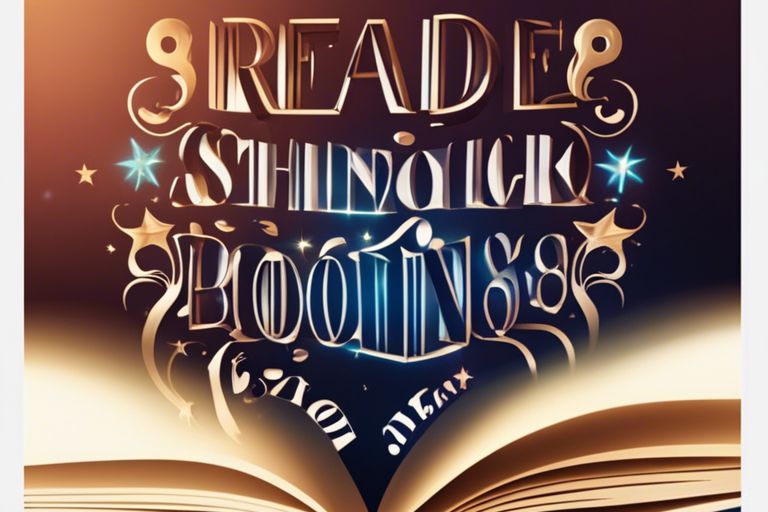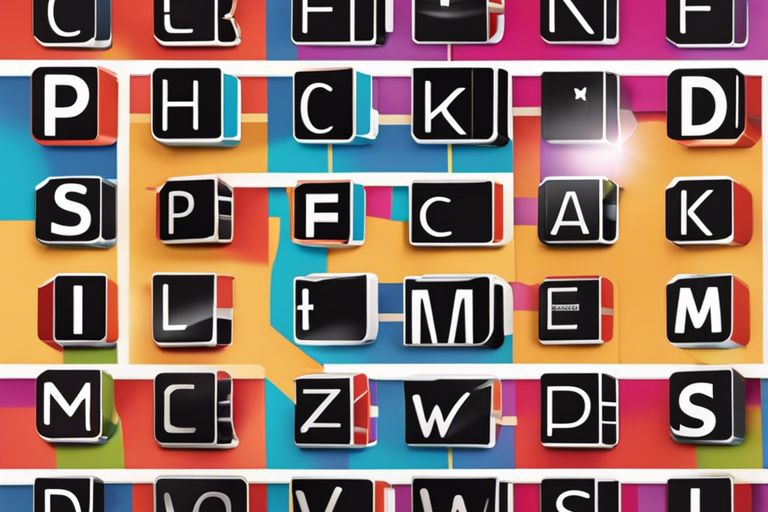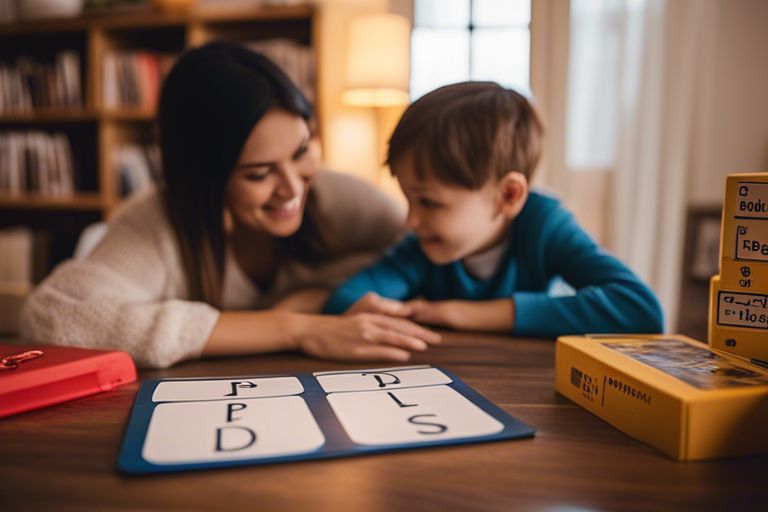Over the years, the focus on phonics instruction has been a crucial aspect of helping young readers develop imperative literacy skills. In this blog post, we will explore how innovative phonics strategies are revolutionizing the way children learn to read and write. By delving into various types of phonics instructional methods and approaches, discussing key findings and determinations from research studies, and highlighting the importance of systematic phonics instruction, we aim to provide educators with valuable insights on how to enhance reading proficiency like never before. Join us on this journey to discover how phonics can be reinvented to maximise literacy outcomes and empower young learners to succeed in their reading journey.
Key Takeaways:
- Systematic Phonics Instruction: Systematic phonics instruction is important for students from kindergarten to 6th grade and particularly beneficial for children struggling with reading difficulties. It enhances word reading, spelling, and text comprehension skills.
- Effective Teaching Approaches: Various phonics instructional methods, such as synthetic, analytic, analogy, embedded phonics, and phonics through spelling, offer diverse approaches to teach letter-sound relationships. These methods cater to different learning styles and abilities.
- Integration and Adaptation: Teachers should integrate systematic phonics instruction with other reading components like phonemic awareness, fluency, and comprehension strategies to create a well-rounded reading program. Teachers must also assess individual student needs and adapt phonics instruction accordingly to optimise learning outcomes.
The Evolution of Phonics Instruction
From Alphabetic Decoding to Modern Innovations
There’s a rich history behind the evolution of phonics instruction, from early alphabetic decoding methods to the innovative strategies used in modern classrooms. The primary focus of phonics instruction has always been to help beginning readers understand the link between letters and sounds, but the methods and approaches have evolved over time to incorporate new research and technology.
The Science of Reading: How Research Shapes Phonics Teaching
To truly understand the evolution of phonics instruction, one must look at how research has shaped the teaching of phonics. Studies have shown that systematic phonics instruction produces significant benefits for students in kindergarten through 6th grade. Systematic synthetic phonics instruction has been particularly effective for improving reading skills in disabled readers, low-achieving students, and those from low socioeconomic backgrounds.
Towards Adapting to Change: Embracing New Challenges in Literacy Education
Science shapes our understanding of phonics instruction, prompting educators to adapt to new challenges in literacy education. With the recognition that phonics is a necessary but not sufficient component of a complete reading program, teachers are encouraged to integrate phonics instruction with other crucial skills such as phonemic awareness, fluency, and comprehension strategies to create a holistic approach to literacy education.
Core Principles of Effective Phonics Strategies
Systematic Progression in Phonics Learning
Despite the various approaches to phonics instruction, a core principle that remains necessary is the systematic progression in phonics learning. With a sequential set of phonics elements delineated, students are taught along a dimension of explicitness depending on the type of phonics method employed. This structured approach ensures that learners build a solid foundation of letter-sound correspondences and spelling patterns, enhancing their reading and spelling abilities.
Multisensory Learning: Engaging All Senses
Systematic incorporation of multisensory learning techniques is crucial in phonics instruction. By engaging all senses – visual, auditory, kinesthetic, and tactile – students can strengthen their understanding of letter-sound relationships. This approach not only caters to diverse learning styles but also reinforces memory retention and application of phonics skills in reading and writing tasks.
Systematic phonics instruction, when combined with the use of visual aids, manipulatives, and interactive activities, can significantly enhance phonemic awareness and letter-sound recognition among students of varying abilities. By appealing to multiple senses, educators can create a dynamic and immersive learning environment that fosters phonics mastery.
Differentiation: Tailoring Instruction to Individual Needs
Core to effective phonics strategies is the principle of differentiation, whereby instruction is tailored to meet the individual needs of students. By assessing each learner’s phonics proficiency and adjusting teaching methods accordingly, educators can provide targeted support to enhance phonics acquisition. This personalised approach ensures that all students receive the necessary scaffolding to progress in their phonics skills.
Progressive differentiation also allows educators to address the varying skill levels and learning paces within a classroom, ensuring that each student receives the appropriate level of challenge and support in their phonics learning journey, as highlighted in research on the benefits of systematic phonics instruction for students across different age groups and abilities.
The Role of Repetition and Practice in Mastery
The role of repetition and practice cannot be understated in mastering phonics skills. Repetitive exposure to letter-sound correspondences and spelling patterns, coupled with consistent practice in applying these skills in reading and writing tasks, is necessary for phonics mastery. This emphasis on regular practice aids in automating phonics skills, leading to increased fluency and accuracy in decoding words.
Through structured repetition and targeted practice activities, educators can reinforce phonics concepts and ensure that students develop a strong foundation in phonics, a key aspect highlighted in the data supporting the effectiveness of systematic phonics instruction in enhancing reading and spelling abilities across different grade levels.
Breakthrough Phonics Strategies for Literacy Boost
Innovative Technology-Driven Phonics Solutions
Phonics plays a crucial role in enhancing literacy skills, and innovative technology-driven solutions like Ready4Reading: K-3 Supplemental Phonics Program are revolutionizing the way children learn to read. By incorporating interactive digital tools and games, these solutions engage students in a dynamic phonics learning experience, making learning fun and effective. These cutting-edge resources are proving to be invaluable in improving reading outcomes for young learners.
Storytelling with Phonics: A New Take on an Old Practice
To truly captivate young minds and instil a love for reading, storytelling with phonics offers a fresh approach. It combines traditional storytelling techniques with phonics instruction, creating an immersive and engaging learning environment. It enables children to see the relevance of phonics in everyday narratives and sparks their imagination while reinforcing key literacy skills.
The Rhythm of Phonics: Integrating Music into Learning
Integrating music into phonics instruction enhances learning by engaging multiple senses and cognitive processes. Intelligence suggests that music can help improve memory retention and language acquisition. By incorporating rhythmic elements into phonics lessons, educators can create a harmonious learning experience that resonates with students and boosts their literacy skills.
Collaborative Phonics Strategies: Peer Learning and Group Activities
Collaborative learning strategies, such as peer learning and group activities, are proving to be effective in phonics instruction. Techniques like shared reading and peer feedback not only enhance phonics skills but also foster a sense of community and teamwork among students. Collaborative phonics approaches empower students to support each other’s learning, leading to improved reading proficiency and overall literacy development.
Implementing Technology in Phonics Instruction
Selecting the Right Tools: A Guide to Phonics EdTech
Any educator looking to enhance phonics instruction through technology must carefully select the right tools to support learning. With systematic phonics instruction proven to benefit students across various grade levels, incorporating technology can further amplify these positive outcomes. By choosing interactive, engaging, and user-friendly EdTech solutions, teachers can effectively supplement traditional teaching methods and cater to diverse learning styles.
Making Learning Interactive: The Role of Gamification
Selecting the appropriate educational games and gamified tools can revolutionise phonics instruction by making learning interactive and enjoyable. Right gamification approach can boost student engagement, motivation, and retention of letter-sound correspondences. With a plethora of phonics-related games and apps available, teachers have the opportunity to transform learning into a stimulating and rewarding experience, ultimately enhancing phonics proficiency and literacy skills.
Instant Feedback and Progress Tracking
Technology can also provide instant feedback and progress tracking features, allowing educators to monitor student performance in real-time. With the ability to track individual progress, identify areas for improvement, and adjust instruction accordingly, teachers can tailor their phonics teaching to meet the specific needs of each student. Incorporating technology for instant feedback can lead to more personalised and effective phonics instruction.
Virtual Reality and Augmented Reality: The Future of Phonics
For educators keen on exploring cutting-edge technology, virtual reality (VR) and augmented reality (AR) present exciting opportunities in phonics instruction. These immersive technologies offer engaging, interactive, and multisensory experiences, enhancing phonics learning in a dynamic and innovative way. With the potential to create virtual environments where students can practice phonics skills in a captivating manner, VR and AR could revolutionise the future of phonics education, making learning truly immersive and unforgettable.
Phonics for Diverse Learners
Catering to Students with Dyslexia: Specialized Approaches
One of the key challenges in phonics instruction is catering to students with dyslexia, a learning difficulty that affects reading and spelling. Specialised approaches, such as systematic synthetic phonics instruction, have shown significant benefits for children with dyslexia. By providing explicit and structured phonics instruction, these students can improve their reading skills and develop strategies to overcome their challenges in decoding and spelling.
English Language Learners and Phonics
Specialized phonics instruction for English Language Learners (ELLs) is imperative to support their literacy development. With a focus on teaching letter-sound correspondence and decoding skills, phonics can help ELLs build a strong foundation in English reading and writing. By incorporating phonics instruction that is tailored to the linguistic needs of ELL students, educators can enhance their language acquisition and literacy skills.
Early Readers: Building a Strong Foundation
Students in their early reading stages require targeted phonics instruction to build a strong literacy foundation. By introducing phonics concepts systematically and providing practice opportunities with decodable texts, early readers can develop imperative reading skills. Literacy programmes that incorporate phonics strategies tailored to the needs of young learners can significantly enhance their reading abilities and comprehension.
Older Students: Remedial Strategies and Confidence Building
Dyslexia and other learning challenges can impact the reading skills of older students, requiring remedial strategies and confidence-building approaches. Phonics instruction tailored to the specific needs of older learners can help improve their decoding, spelling, and reading comprehension skills. By addressing the challenges faced by older students through targeted phonics interventions, educators can support their literacy development and boost their confidence in reading.
Beyond the Classroom: Phonics in Everyday Life
Creating a Literate Environment at Home
One of the most effective ways to support the teaching of phonics is by creating a literate environment at home. Surrounding children with books, engaging in shared reading activities, and encouraging them to practice their phonics skills in everyday situations can significantly enhance their literacy development. Research shows that children who are exposed to a print-rich environment at home tend to have higher levels of reading achievement.
Phonics in Digital Media: Opportunistic Learning
With the rise of digital media, there are ample opportunities to incorporate phonics learning in everyday life. Interactive phonics games and educational apps can make learning engaging and fun for children. It has been found that incorporating phonics activities in digital media can lead to improved reading and spelling skills among young learners.
It is important to ensure that the digital content is age-appropriate and aligns with the phonics concepts being taught in the classroom to reinforce learning effectively.
Community Involvement in Promoting Literacy
Online platforms and community initiatives play a crucial role in promoting literacy beyond the classroom. Schools, libraries, and local organisations can collaborate to create reading programmes and events that engage families and encourage a love for reading. Studies have shown that community involvement in literacy initiatives can lead to increased reading motivation and improved reading outcomes among students.
Media campaigns and online literacy resources can also be powerful tools to raise awareness about the importance of phonics instruction and encourage community participation in promoting literacy.
Role of Parents and Caregivers in Reinforcement
Parents and caregivers play a vital role in reinforcing phonics instruction at home. By actively participating in their child’s reading journey, providing opportunities for phonics practice, and modelling a positive attitude towards reading, parents can significantly impact their child’s literacy development. Studies have shown that parental involvement in literacy activities can lead to improved reading fluency and comprehension skills among children.
Creating a supportive home environment where phonics is valued and practised regularly can have a lasting impact on a child’s literacy skills and overall academic success.
Measuring Success: Assessing Phonics Progress
Tools for Phonetic Assessment and Monitoring
Any successful phonics instruction program requires regular assessment and monitoring of student progress. Utilising tools such as those outlined in Phonics Instruction, educators can track how well students are grasping key phonetic concepts, identifying areas of improvement and areas needing further attention. These tools provide valuable insights into individual student needs and allow for targeted intervention strategies.
Qualitative Measures: Observing Behavioral Changes
Changes in students’ behaviour can often be indicators of phonics progress. Observing how students approach reading tasks, their confidence levels, and their ability to apply phonics rules in real-time situations can offer valuable qualitative data. To effectively utilise this information, teachers can adapt their teaching strategies to address specific student needs, ensuring continuous improvement and growth.
Data-Driven Decisions: Using Analytics for Improvement
Reflection on collected data plays a crucial role in making informed decisions about the direction of phonics instruction. By analysing assessment results, educators can identify trends, pinpoint areas of strength and weakness, and tailor their teaching methods accordingly. Data-driven decisions ensure that phonics instruction remains dynamic and responsive to the evolving needs of students.
The Impact of Phonics on Overall Literacy Rates
Rates of literacy improvement are directly linked to the effectiveness of phonics instruction. For instance, studies have shown that systematic phonics instruction in kindergarten and 1st grade significantly enhances reading and spelling abilities in children. By understanding how phonics contributes to overall literacy rates, educators can prioritise the implementation of evidence-based phonics programs to maximise student success.
The Future of Phonics and Literacy Instruction
After A movement rises to change the teaching of reading, the landscape of phonics and literacy instruction is evolving rapidly. Let’s explore upcoming trends, the role of big data and learning analytics, adaptability in teaching methods, and global strategies for achieving universal literacy through innovative technologies.
Upcoming Trends in Literacy Education Technologies
Trends in literacy education technologies are shaping the future of how students engage with reading materials. With the advancement of digital platforms and interactive tools, educators are exploring new ways to enhance literacy skills through gamified learning experiences and personalised feedback mechanisms.
The Role of Big Data and Learning Analytics
Education embraces the potential of big data and learning analytics to tailor instruction to individual student needs. It analyses student performance data to identify patterns, preferences, and areas for improvement. This data-driven approach allows educators to refine their teaching strategies and provide targeted support to students, ultimately enhancing literacy outcomes.
Preparing for an Uncertain Future: Adaptability in Teaching Methods
Instruction must adapt to meet the challenges of an uncertain future. Teachers need to be versatile in their approach, incorporating diverse teaching methods that cater to the evolving needs of learners. By embracing flexibility and innovation in pedagogical practices, educators can ensure that all students receive the necessary support to thrive in an ever-changing educational landscape.
The Quest for Universal Literacy: Global Strategies and Collaborations
Global initiatives and collaborations are vital in the quest for universal literacy. By sharing best practices, resources, and expertise on a global scale, educators can work towards eliminating literacy disparities and empowering individuals worldwide. Leveraging technology and cross-cultural collaboration, we can pave the way for a more literate and informed global community.
Conclusion
Considering all points discussed, it is evident that the implementation of innovative phonics strategies has the potential to revolutionize literacy instruction for students. By embracing systematic and explicit phonics instruction, teachers can empower learners to develop strong foundational skills in reading and spelling. The findings emphasise the importance of integrating various phonics approaches to cater to the diverse needs of students and ensuring that phonics instruction is part of a comprehensive reading programme. Teachers should strive to maintain a balance between phonics instruction and other components of literacy education, such as phonemic awareness, fluency, and comprehension strategies, to create a holistic approach to reading instruction. By fostering a dynamic and creative learning environment, where phonics skills are taught in an engaging manner, educators can truly transform the reading experience for learners, ultimately leading to improved reading accuracy, fluency, and comprehension.
FAQ
Q: What is ‘Reading Reinvented: Innovative Phonics Strategies to Boost Literacy Like Never Before!’ about?
A: ‘Reading Reinvented: Innovative Phonics Strategies to Boost Literacy Like Never Before!’ is a comprehensive guide that introduces groundbreaking phonics techniques aimed at significantly improving literacy levels.
Q: How can ‘Reading Reinvented’ benefit educators and students?
A: Educators can enhance their teaching methods by implementing these innovative phonics strategies, leading to improved reading and spelling skills in students of all ages and abilities.
Q: Why is ‘Reading Reinvented’ a valuable resource for classrooms?
A: ‘Reading Reinvented’ offers evidence-based insights into the effectiveness of systematic phonics instruction, emphasising the importance of integrating phonics with other reading components for a well-rounded literacy programme.












